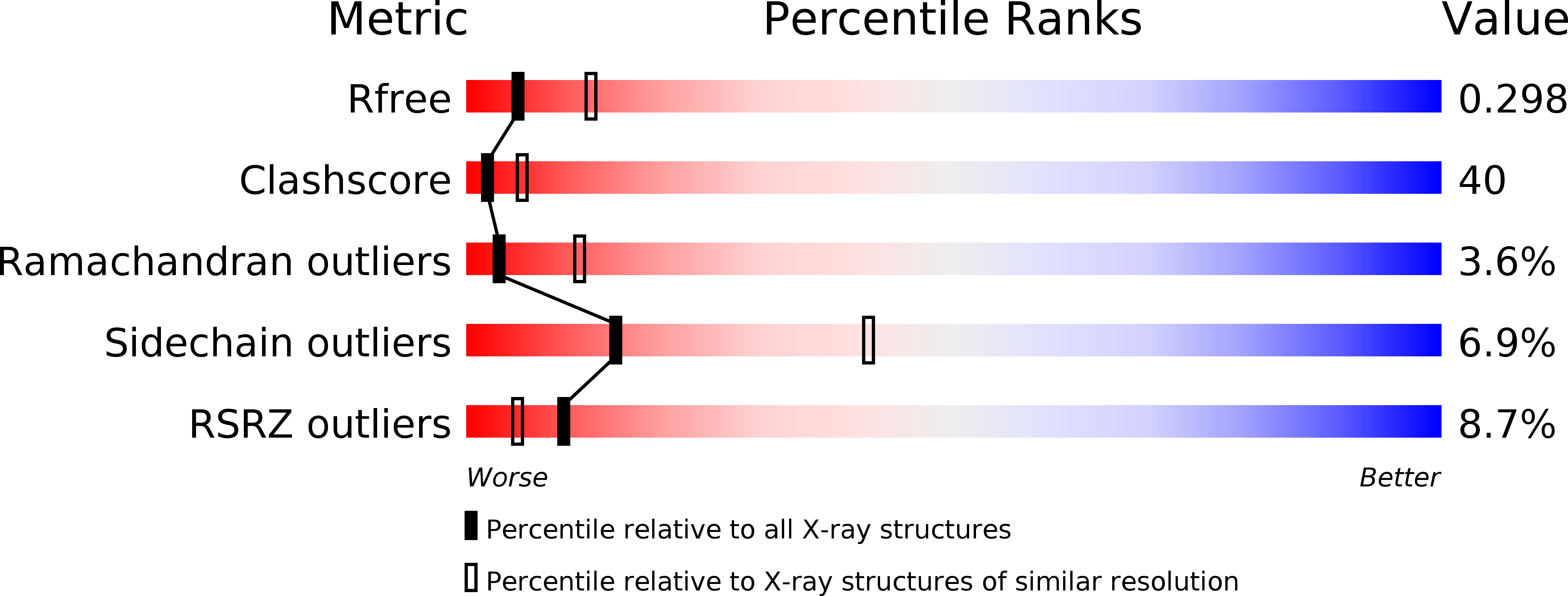Conformational effects in biological catalysis: an antibody-catalyzed oxy-cope rearrangement.
Mundorff, E.C., Hanson, M.A., Varvak, A., Ulrich, H., Schultz, P.G., Stevens, R.C.(2000) Biochemistry 39: 627-632
- PubMed: 10651626
- DOI: https://doi.org/10.1021/bi9924314
- Primary Citation of Related Structures:
1D5B, 1D5I, 1D6V - PubMed Abstract:
Antibody AZ-28 was generated against the chairlike transition-state analogue (TSA) 1 and catalyzes the oxy-Cope rearrangement of substrate 2 to product 3. The germline precursor to AZ-28 catalyzes the reaction with a 35-fold higher rate (k(cat)/k(uncat) = 163 000), despite a 40-fold lower binding affinity for TSA.1 (K(D) = 670 nM). To determine the structural basis for the differences in the binding and catalytic properties of the germline and affinity-matured antibodies, the X-ray crystal structures of the unliganded and TSA.1 complex of antibody AZ-28 have been determined at 2.8 and 2.6 A resolution, respectively; the structures of the unliganded and TSA.1 complex of the germline precursor to AZ-28 were both determined at 2. 0 A resolution. In the affinity-matured antibody.hapten complex the TSA is fixed in a catalytically unfavorable conformation by a combination of van der Waals and hydrogen-bonding interactions. The 2- and 5-phenyl substituents of TSA.1 are almost perpendicular to the cyclohexyl ring, leading to decreased orbital overlap and decreased stabilization of the putative transition state. The active site of the germline antibody appears to have an increased degree of flexibility-CDRH3 moves 4.9 A outward from the active site upon binding of TSA.1. We suggest that this conformational flexibility in the germline antibody, which results in a lower binding affinity for TSA.1, allows dynamic changes in the dihedral angle of the 2-phenyl substituent along the reaction coordinate. These conformational changes in turn lead to enhanced orbital overlap and increased catalytic rate. These studies suggest that protein and substrate dynamics play a key role in this antibody-catalyzed reaction.
Organizational Affiliation:
Department of Chemistry, University of California, Berkeley, Berkeley, California 94720, USA.






















